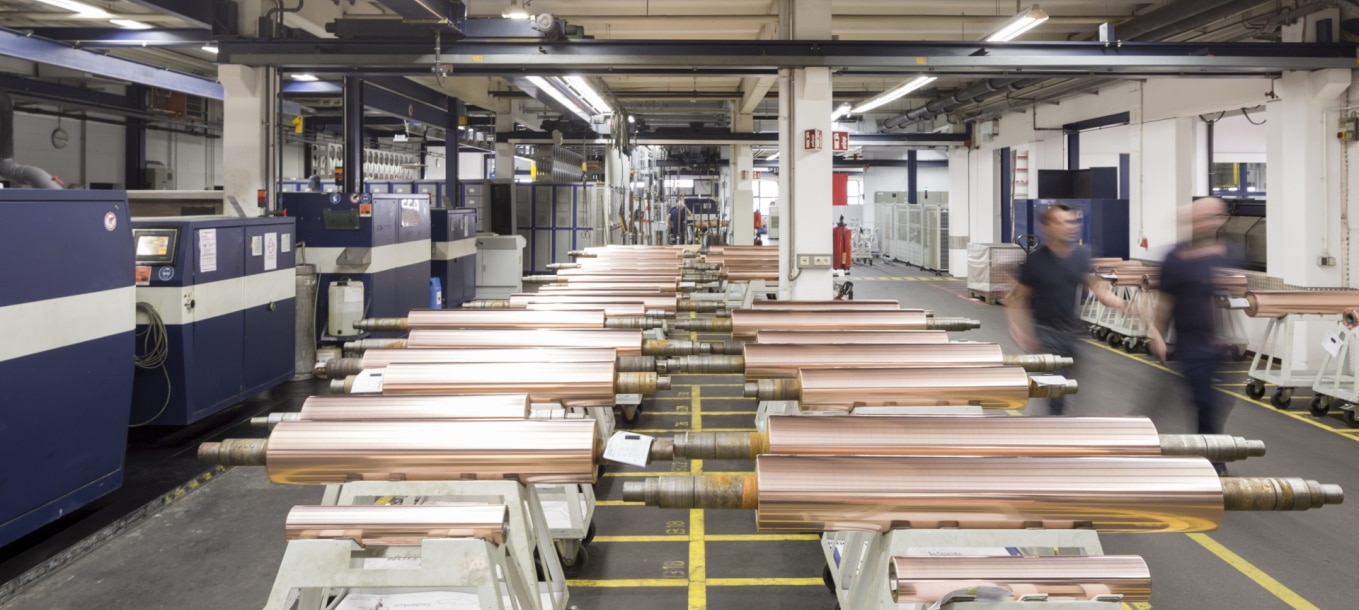Background
The client is a mid-size industrial manufacturer with over 25 sites and a rich history of nearly 100 years of manufacturing excellence.
From data darkness to data-driven
Twenty-five years ago, this client built a cutting-edge Excel-based application to capture quality data—which was entered by hand—and pull sensor data from a data historian.
A quarter century later, this application was far from cutting-edge. They could no longer update it, and just loading a report took 15 minutes. It had become a security threat, and poor functionality meant people simply stopped using it.
They needed a more efficient way to monitor quality data and were ready to invest to make it happen. But after an 18-month pilot with another vendor left them no better off than when they started, they were skeptical.
Their digital transformation goals involved eight bespoke solutions, including:
- Real-time production monitoring
- Predictive maintenance
- Quality control
- Scrap reduction
To achieve these goals, they needed to integrate factory floor and enterprise systems, centralize vast amounts of data, and process data for advanced analytics.
Designing the solutions
The client heard about FactoryEye’s success with another manufacturer, but the results sounded too good to be true. So, we started with a two-week proof of concept. After the proof of concept phase, they liked what they saw and were ready to try a pilot at one plant.
Three weeks into the pilot, we achieved data integrity between the plant floor and the reporting in the FactoryEye platform—something the previous vendor failed to do in 18 months.
Here’s how we did it.
Our FactoryEye team met with stakeholders within the company to understand their most significant challenge. In this case, their primary challenge was around capturing, processing, analyzing, and visualizing data to make real-time decisions.
To ensure success, we wanted to first test the whole process at one plant before rolling out any changes at the other plants. We also chose a web based platform to shift to so that no installation would be necessary at any of the plants. Zero software installations ensured that the client will not run into an outdated problem again. Our solution would permanently offer easy access across all plants for quick updates.
We broke this challenge into eight parts and designed a solution for each. Then, we designed a sprint implementation plan that would have us roll out the initial eight solutions in the first 90 days. The subsequent sprints were also no longer than 90 days, and each had clear key performance indicators (KPIs) to measure success. Furthermore, FactoryEye designed each sprint to add value. This agile approach allowed for short feedback loops, letting us quickly identify what worked.
In the first sprint, FactoryEye focused on enhancing the client’s data collection processes. This included installing IIoT sensors across the factory floor to create a data-rich environment.
Next, FactoryEye needed to integrate various data sources and software systems. Thanks to our team’s deep experience in this field and Magic Software’s xpi integration tool, which comes standard with FactoryEye, we were able to do this remarkably quickly. Whereas some vendors might say, “Here’s our API, best of luck with your integrations,” we say, “Point to what you want to be connected, and we’ll make it happen.”
Then, FactoryEye created bespoke solutions to gain proof of concept for each use case. We weren’t aiming for perfection. We started with functional because we knew the enemy of progress was perfection. At the end of sprint one, after 90 days, we proved out an end-to-end data collection and reporting process that fully replaced the legacy system at a single plant.
Moving into sprint two, FactoryEye collected feedback and iterated on the solutions. Because our solutions involved both manual and automatic data collection, we needed to make sure everyone from plant floor operators entering information from the line all the way up to plant managers and the C-Suite had space to work with the solution and let us know what would make it easier for them to use and provide them even more value. Once they were all satisfied, we set our sights on the next sprint: scaling the solutions.
Scaling the solutions
Once FactoryEye developed these solutions for one plant, the client was thrilled. But they were also ready for more. Having seen the impact, they wanted to roll out the solutions at all their 18 other plants that processed the same materials.
FactoryEye was able to do this in just 18 weeks.
A few things made this timeline possible. First, FactoryEye is cloud-based. Instead of installing updates on every client-server and machine, we could roll out the software online. Second, using our sprint methodology, we had worked out any kinks in the solution at the first plant during the feedback and iteration stage, meaning that when it was time to scale, everything was fine-tuned and ready to go.
FactoryEye’s rollout process involved three steps: cleansing the data, training the staff, and going live. However, FactoryEye staggered the process so that in any given week, we’d be cleansing the data at one plant to ensure the data streams’ structure and frequency matched the pilot plant. Meanwhile, that same week, we’d be training the staff at a different plant and going live at a third plant.
And we made the training as easy for the client as possible since the technology was intuitive and built into the design process itself. The customer did not require any on-site training. We found that virtual 30-minute training sessions was all that it took to learn our user-friendly process. All necessary staff were able to fit a 30-minute training session into their schedule. Ensuring comprehension across all personnel and minimizing the training itself was a key component into the fast rollout of the new systems at every plant.
Stepping into a new era of data-driven manufacturing
Like many manufacturers, this client operates in a fiercely competitive industry with small margins. In this context, minor improvements can make or break the company’s profitability. Now, armed with 360-degree data collection and analysis, the client uses data as its competitive advantage. Since our initial engagement, the client has continued to dive deeper into the FactoryEye platforms by utilizing our AI/ML for predictive maintenance, alarms, alerts, and more.
In addition to helping the bottom line, the FactoryEye platform has helped improve the daily work of the client’s employees. In the past, they were stuck using an inefficient MS Excel solution, and extracting data-driven insights was a cumbersome and frustrating process. Loading a single report used to take 15 minutes, but with FactoryEye’s browser-based portal application it only takes seconds to have multiple reports with customizable dashboards from any plant at their fingertips.
Furthermore, without 360-degree visibility, plant floor operators struggled to get to the bottom of their recurring problems. For instance, before the solution was in place, the corporate office had no idea their plants were having power outages almost twice a week. They relied on asking others for reports, a process which could take days and at which point a serious problem could have already occurred. Ease of centralized access through the web proved to be a huge help to the leadership team as they are less dependent on other staff and have more knowledge and control. Leadership has the power to pull up their dashboards and notice a problem in real time.
As another example, when the operators switch between products on the plant floor, they often forget to change the recipe to match the bill of materials since they’d have to log in to their ERP to see this. To address this common oversight, the FactoryEye platform ingests data from SAP and from the data historian on the plant floor to make sure that the ingredients on the production line match the bill of materials. And if something is wrong, they immediately get an alert. The team no longer goes hours before realizing something is wrong. This has saved both the time and material that would have otherwise been scrapped.
Also, when machines used to go down, the employees were in the dark as to why it happened, and management didn’t realize how often it was happening. With FactoryEye’s real-time monitoring solutions, plant floor operators receive alerts before a machine goes down, and management enjoys seeing downtime continue to shrink.
Taking back control
There were three keys to success in the smooth transition of 18 plants in 18 weeks: migration to web control, quick sprint feedback loops, and intuitive systems for staff and management. The transformation was rolled out as quickly as it was because of the built-in ease of use.
In fact, the real success isn’t even about how fast the solution was rolled out, but rather how big of an improvement that it was. The web-based platform now ensures that the customer will always receive the updates it needs to stay on top of security threats and factory efficiency goals. With more knowledge, corporate leaders are able to make real-time decisions that assist with what their plant workers are actively dealing with on the floor. Ease of reporting visibility allows insightful practices and a clear path forward.




